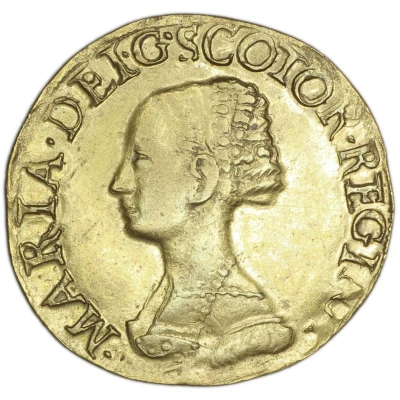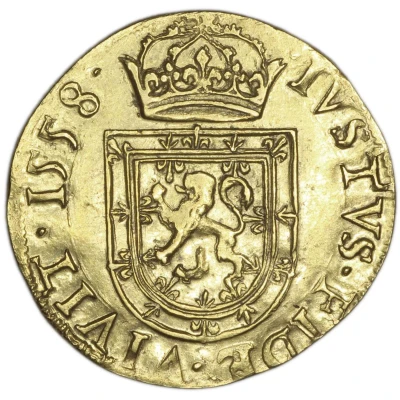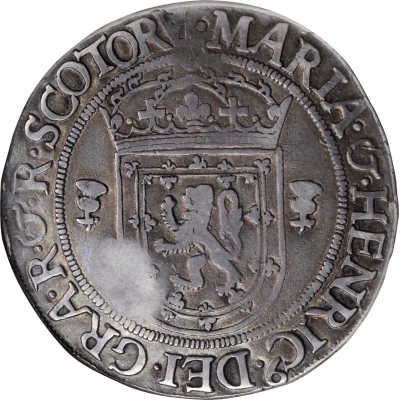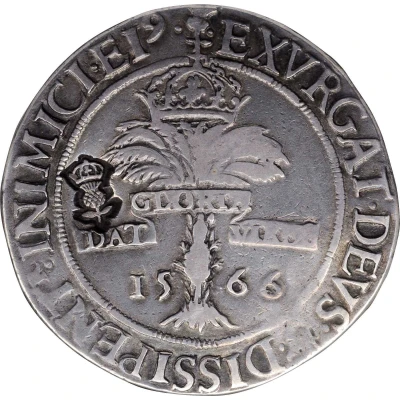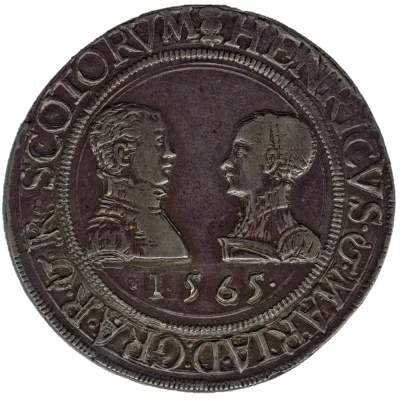
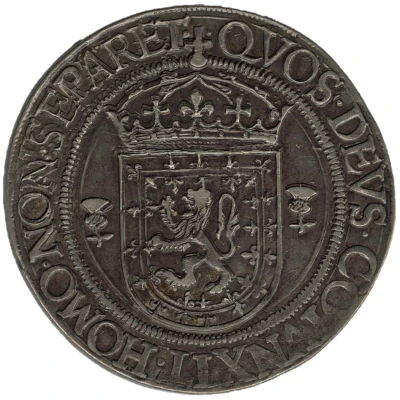

© Trustees of the British Museum
1 Ryal - Mary and Henry Darnley 4th Period, Type I
1565 year| Silver (.916) | 30.54 g | 41 mm |
| Issuer | Scotland (United Kingdom, British Overseas Territories and Crown Dependencies) |
|---|---|
| Queen | Mary I (1542-1567) |
| King | Henry Stuart (1565-1567) |
| Type | Standard circulation coin |
| Year | 1565 |
| Value | 1 Ryal (3⁄2) |
| Currency | Pound Scots (1136-1707) |
| Composition | Silver (.916) |
| Weight | 30.54 g |
| Diameter | 41 mm |
| Shape | Round (irregular) |
| Technique | Hammered |
| Orientation | Variable alignment ↺ |
| Demonetized | Yes |
| Updated | 2024-10-08 |
| Numista | N#186996 |
|---|---|
| Rarity index | 100% |
Reverse
Crowned royal arms, flanked by a thistle on each side
Script: Latin
Lettering: · QVOS · DEVS · COIVNXIT · HOMO · NON · SEPARET ·
Translation: Those whom God hath joined together, let not man put asunder
Comment
This coin was met with opposition upon its introduction as its presentation of Henry's name in front of Mary's was seen as symbolising that he held more authority than her. It was quickly withdrawn from circulation and replaced with a coin that placed Mary's name in the prime position. There are only two known specimens of this coin in existence, both of which are in public museums. One is held in the National Museum of Scotland, Edinburgh and another is in the British Museum, London.National Museum of Scotland specimen: https://www.nms.ac.uk/explore-our-collections/collection-search-results/?item_id=600473
Interesting fact
One interesting fact about the 1 Ryal - Mary and Henry Darnley (4th Period, Type I) 1565 from Scotland is that it features the first joint portrait of a Scottish monarch and their consort on a coin. The coin depicts Queen Mary I and her husband, Henry Darnley, who was the Duke of Albany and King Consort of Scotland. This was a unique departure from the traditional practice of featuring only the monarch's portrait on coins, and it signified the importance of Henry Darnley's role in Scottish politics and society at the time.
